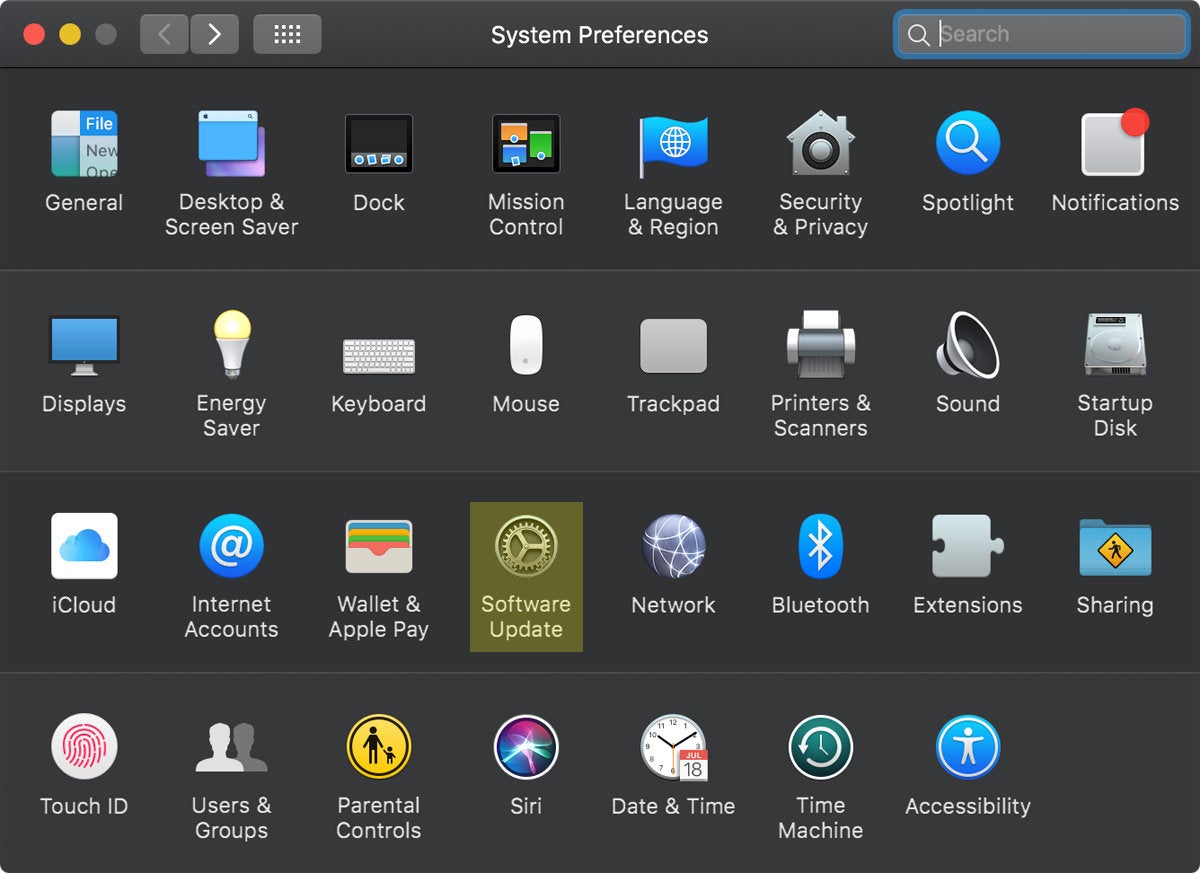Dec 29, 2018 1.7)Mac Pro (Late 2013, plus mid-2010 and mid-2012 models with recommended Metal-capable GPU) Step 2: Take Mac Data Backup. Before downloading any major update to your Mac operating system, it is very important to backup your data. The best way to ensure a smooth transition from an older operating system to Mojave is with Time Machine. Dec 28, 2019 Get back your lost Mac’s data using top best data Recovery software for Mac Mojave, High Sierra, EI Capitan. Unfortunately, You lose data (Photos, Music, Video or Number, Pages, Documents) from Mac’s drive at home or Business use. From our research and user reviews, the Personal experience we recommended below two best mac’s data recovery tools in few dollars.
Is your Mac up to date with the latest version of the Mac operating system (macOS or OS X)? Is it using the version required by some product or feature? Which versions are earlier (older) or later (newer, more recent) than the version currently installed? To find out, learn which version is installed now.
If your macOS isn't up to date, you may be able to update to a later version.
Which macOS version is installed?
From the Apple menu in the corner of your screen, choose About This Mac. You'll see the macOS name, such as macOS Mojave, followed by its version number. If some product or feature requires you to know the build number as well, click the version number to see it.
This example shows macOS Catalina version 10.15 build 19A583.
Which macOS version is the latest?
These are all Mac operating systems, starting with the most recent. When a major new macOS is released, it gets a new name, such as macOS Catalina. And as updates that change the macOS version number become available, this article is updated to show the latest version of that macOS.
If your Mac is using an earlier version of any Mac operating system, you should install the latest Apple software updates, which can include important security updates and updates for the apps installed by macOS, such as Safari, Books, Messages, Mail, Music, Calendar, and Photos.
| macOS | Latest version |
|---|---|
| macOS Catalina | 10.15.5 |
| macOS Mojave | 10.14.6 |
| macOS High Sierra | 10.13.6 |
| macOS Sierra | 10.12.6 |
| OS X El Capitan | 10.11.6 |
| OS X Yosemite | 10.10.5 |
| OS X Mavericks | 10.9.5 |
| OS X Mountain Lion | 10.8.5 |
| OS X Lion | 10.7.5 |
| Mac OS X Snow Leopard | 10.6.8 |
| Mac OS X Leopard | 10.5.8 |
| Mac OS X Tiger | 10.4.11 |
| Mac OS X Panther | 10.3.9 |
| Mac OS X Jaguar | 10.2.8 |
| Mac OS X Puma | 10.1.5 |
| Mac OS X Cheetah | 10.0.4 |
Learn more
- Always use the macOS that came with your Mac, or a compatible newer version.
- Learn how to reinstall macOS from macOS Recovery.

Yes, upgrade from OS X El Capitan to macOS Mojave is absolutely possible. Check the below solution to upgrade from El Capitan to directly Mojave without facing any data loss problems.
Step 1: First Check your System Compatibility:-
First and foremost, make sure your Mac is compatible with macOS Mojave. In general, most Macs from 2012 or newer are compatible. Here's a list of Macs that can run macOS Mojave:-
1.1)MacBook (Early 2015 or newer)
1.2)MacBook Air (Mid 2012 or newer)
1.3)MacBook Pro (Mid 2012 or newer)
1.4)Mac mini (Late 2012 or newer)
1.5)iMac (Late 2012 or newer)
1.6)iMac Pro (2017)
Mac Os Versions
1.7)Mac Pro (Late 2013, plus mid-2010 and mid-2012 models with recommended Metal-capable GPU)
Step 2: Take Mac Data Backup
Before downloading any major update to your Mac operating system, it is very important to backup your data. The best way to ensure a smooth transition from an older operating system to Mojave is with Time Machine. If you don't already have a backup plan in place, there are a few options you can check out.
Step 3: Download and install macOS Mojave
Apple has made it very easier to simply download and install Mojave, even if you are running an older operating system. If your Mac is running El Capitan, Sierra, or High Sierra, here's how to download macOS Mojave.
Download Mac Os Mojave Installer
3.1)First, click on the Apple icon in the upper left corner of your screen.
3.2)Click on App Store.
3.3)Click on the Featured.
3.4)Click on macOS Mojave in the Mac App Store.
3.5)Click on Download under the Mojave icon.
3.6)Wait for macOS Mojave to finish downloading.

3.7)Click Install to begin the installation process.
After following the above steps, you will be able to upgrade your operating system from Mac OS X El Capitan to macOS Mojave.